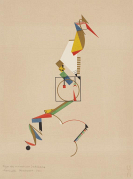
Marcel Breuer
Pècs
1902 -
New York
1981
The Hungarian architect and designer Marcel Breuer enrolled at the Akademie der bildenden Künste in Vienna in 1920. That same year, however, Breuer dropped out of the Viennese Art Academy and went to Weimar to study at the "Bauhaus". Between 1920 and 1924 Marcel Breuer worked in the "Bauhaus" furniture workshop. In 1923 Marcel Brauer produced his first architecture designs and worked on the public housing designed by Walter Gropius' practice.
From 1925 until 1928 Marcel Breuer was head of the furniture workshop. This was the period in which Breuer produced his first tubular steel chair, which he presented in 1927 as the "Type B3 steel Club Chair". Later this model was renamed "Wassily".
In 1926-27 what was known as the "Breuer Crisis" arose at the Bauhaus, sparked off by Marcel Breuer teaming up with the Hungarian architect Stefan Lengyel to found the Standart Furniture Company without first consulting the "Bauhaus" board of directors. Marcel Breuer subsequently designed a large number of tubular steel furniture, including chairs, tables and cupboards, which were made and marketed by Standart Furniture in Berlin. Some tubular steel furniture designed by Marcel Breuer was later also made by the Thonet Brothers and Knoll International.
Using tubular steel as his basic element had the great advantage for Marcel Breuer in that it represented an already standardized element for his furniture type and besides was extremely economical and hygienic. In all phases of his working life, Marcel Breuer would continue to apply other techniques and materials in his designs for standardized, reasonably priced furniture.
In 1928 Marcel Breuer founded an architecture practice in Berlin but the "Bund Deutscher Architekten" (BDA: the German Architecture Association) refused to admit him as a member until 1931. Receiving no commissions for buildings, Marcel Breuer concentrated on interior design, continuing to develop his type furniture.
The first house Marcel Breuer built was "Haus Harnischmacher" in Wiesbaden in 1931. In Zurich Marcel Breuer designed "Wohnbedarf", a furniture store. Two years later Breuer designed (together with Alfred and Emil Roth) the Doldertaler houses, two experimental housing units. To escape persecution by the Nazis since he was of Jewish descent, Marcel Breuer went to Hungary in 1933 but went on to England in 1935 and, finally, to the US in 1937. There Marcel Breuer, like Walter Gropius, taught at the Harvard University School of Design until 1946.
Marcel Breuer and Walter Gropius even joined forces briefly to run a joint architecture practice. They produced the Pennsylvania Pavilion for the 1939 New York World's Fair as well as several private dwellings, including Gropius' own house. In 1941 hat Marcel Breuer again opened an architectural practice of his own, which he moved to New York in 1946 (in 1956 it was renamed Marcel Breuer and Associates).
Marcel Breuer designed more than seventy private houses as well as numerous university and office buildings. To name just a few of them, the buildings Marcel Breuer designed included the UNESCO Building in Paris (1953-1958), the Whitney Museum of American Art in New York (1966), the Flushing Meadow sports grounds, New York (1960/61), and the IBM laboratories at La Gaude, France.
Marcel Breuer was indeed one of the most important Modernists.
Would you like to sell a work by Marcel Breuer?
Infos for seller







